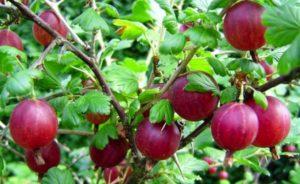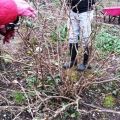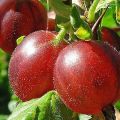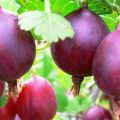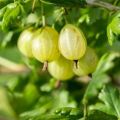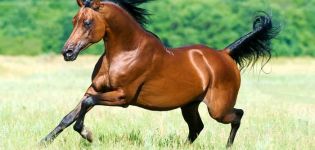How to plant a standard gooseberry, growing, planting and care
A beautiful standard gooseberry is recognized to become a decoration of the site and amaze relatives and guests. You can get such a plant by grafting a gooseberry, or by growing it yourself. It is important to choose the right varieties with winter hardiness and carry out the work in accordance with the requirements of agricultural technology.
Content
- 1 Why plant gooseberries
- 2 Pros and cons of growing gooseberries on a stem
- 3 What are gooseberries grafted on?
- 4 Necessary conditions for the procedure
- 5 When should you get vaccinated?
- 6 How to plant a gooseberry on a stem: technological process
- 7 How to grow and care for standard gooseberries?
- 8 How to properly shape and cut a bush
- 9 Tips for gardeners for the procedure
Why plant gooseberries
There are several reasons for grafting gooseberries:
- Creation of standard plants. When the crown is slightly raised, the “berry tree” is easier to care for: harvesting and pruning. With uniform illumination, the berries are relatively larger and with better taste characteristics. Flowers and ovaries are much less affected by late spring frosts.
- A beautiful view of the plant, which is taken into account in landscape design.
- Used in small areas as space is saved.
Pros and cons of growing gooseberries on a stem
Growing gooseberries on a stem has its own distinctive features, which are characterized by positive and negative sides.
The main advantages of such cultivation include:
- a standard bush, covered with flowers and berries, looks extremely impressive and attracts attention;
- the risk of damage to leaf plates and berries with powdery mildew decreases;
- such a shrub gives fruits one and a half times more than usual;
- it is more convenient to care, treat with special means;
- easier to care for the near-stem section;
- comfortable to harvest.
When choosing this method of growing, it is recommended to take into account the negative aspects:
- require more care: remove root shoots, sprouts that appear on the trunk;
- despite the large size of the fruits, the yield falls;
- in areas with a cold climate, the risk of frost damage increases if the variety is not frost-resistant enough;
- the likelihood of damage to the plant by currant glass increases;
- the vital activity of the plant depends on the trunk, the main and single shoot.
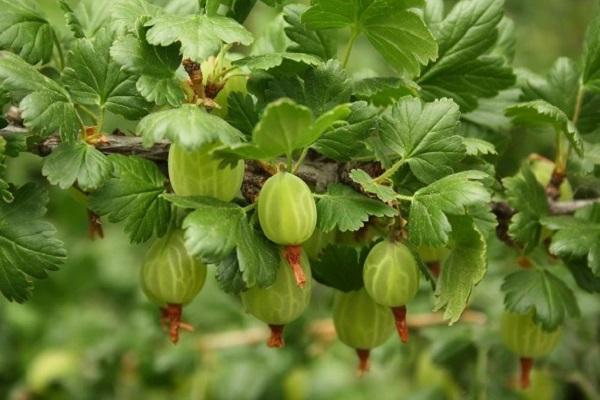
What are gooseberries grafted on?
Grafting of gooseberries is carried out on berry crops (red currants and gooseberries), less often on fruit trees.
Fruit trees and bushes
You can grow gooseberries on a fruit tree. But this is suitable for experimental gardeners as it comes with a lot of risk.
Cherry is used extremely rarely, despite the success of foreign experiments. The survival rate is average. In practical application, numerous rejection of the grafted parts has been noticed. But with effective grafting, the appearance of large berries with non-standard taste characteristics is noted.
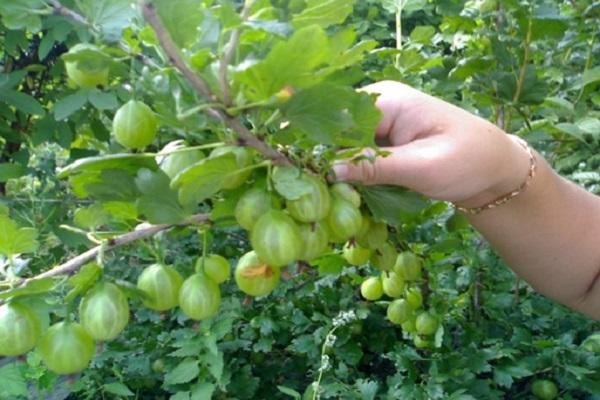
Rowan and plum are used when it is not possible to choose a suitable stock. The percentage of established scions is low. The vaccinated part does not hold well.
Thus, the use of fruit trees is considered experimental.
When grafting is carried out, seedlings of golden currant are used, and gooseberry cuttings are grafted onto its stem. The currant stock must be grown from cuttings or cuttings by yourself. Moreover, forcing is not carried out by a bush, but is directed to the formation of vertical shoots.
In addition, experienced gardeners recommend using yoshta, which is a hybrid currant-gooseberry plant. Advantages: straight shoots, quite strong, resistant to winter frosts, immune to harmful insects and common diseases. At this rootstock, it is necessary to leave a single shoot, pinch the formed lateral shoots, which will entail the rapid formation of a thick trunk.

Compatible gooseberry varieties
In the process of choosing a stock, the question arises: how to graft gooseberries onto gooseberries? For such a procedure, you need to choose the right variety:
- Oregon gooseberry: perfect for areas with an abundance of rainfall or high-flowing places, since currants tend to develop dropsy (edema) in such conditions.
- Common gooseberry: great as a stock, alongside Oregon and golden currants.
- The Malachite variety is characterized by a medium ripening period, a vigorous bush, resistant to low temperatures, which is its advantage.
Necessary conditions for the procedure
For the vaccination procedure to be effective, you need:
- For winter grafting, it is important to properly prepare cuttings and stock. Cuttings should be strong annual shoots. Stock: 1-2 year old currant seedlings. Cuttings should be dormant before spring grafting.
- For grafting in the spring, prepare cuttings in the first weeks of winter, store in the snow, and when heat appears, move to the refrigerator.
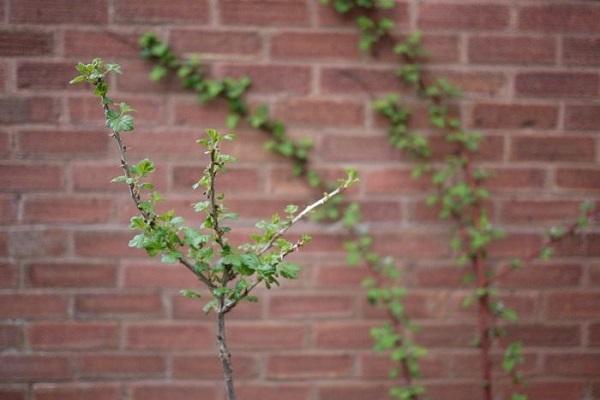
When should you get vaccinated?
The gooseberry grafting procedure is performed in the summer, winter or spring. Grafting with a cuttings on previously prepared and sufficiently hardened rootstock seedlings is carried out during the growing season:
- from July to mid-September - in the side cut;
- in the last weeks of summer - in the butt or with an oblique wedge;
- from July to August - budding with a peephole with a piece of wood.
Inoculation in winter and spring brings excellent performance, which is carried out in the last week of February - early March.
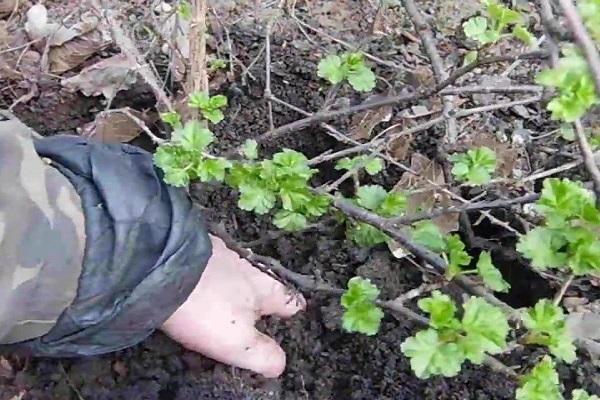
How to plant a gooseberry on a stem: technological process
Taking into account the time of the grafting procedure, cuttings are harvested in the fall or immediately before the grafting itself.
Scion preparation
For winter grafting, cuttings of a varietal plant (scion) are harvested. Thorns are cut off from them. Stored in a temperature range from 0 to 3 aboutC. Wet sand, peat or sawdust is used for storage.
Stock preparation
Rootstocks for grafting in winter are dug up in the fall. They must be stored in a basement, wet peat, sand, sawdust are used. The optimum temperature for storage is 0-3 aboutFROM.
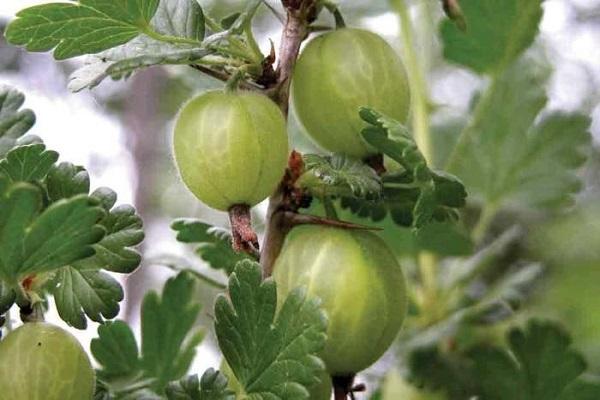
Step-by-step vaccination technology
In the process of cultivating gooseberries with a stem, grafting is used in the butt, lateral incision, T-shaped incision and in the split.
It is necessary to choose so that the rootstock and the scion correspond to each other in diameter. The grafting procedure is carried out in February-March. Rooted rootstock cuttings are placed in a cold basement room in the fall. After the vaccination, until both parts grow together, they are placed in conditions with a temperature regime of 18 to 23 degrees. Keep cool until disembarking.
At the end of the summer period, grafting is carried out on the mother plant. To do this, you need to form a bush for propagation by layers directed upwards. Grafting is carried out with an almost lignified cuttings. In the autumn period, a similar scion will take root, a shrub with grafted cuttings is divided.

In the splitting, grafting is carried out in the spring, even before the onset of the vegetation process, and at the end of summer.
It is recommended to inoculate by the method of improved copulation according to the following plan:
- On the rootstock, determine a strong vertically formed sprout. Cut the remaining shoots under the base.
- Pick up the scion stalk that matches the size of the diameter.
- Make an oblique cut on the scion from below, try to make its length correspond to three sizes of the cutting diameter. Then place it in a container with Heteroauxin solution.
- On the rootstock, make a similar cut at the required height. As a rule, it is 0.6-0.8 m. Wet the resulting cut with Heteroauxin.
- Remove the handle from the Heteroauxin and make a tongue a couple of millimeters in size on the lower incision.
- Attach the edge of the cutting to the stock, mark the section for the cut. It should match the location of the tongue, and perform a similar one on the rootstock.
- Join both parts according to the puzzle scheme - tongue into tongue.
- Tie the vaccination site with a special tape (self-destructive) or other similar material.
- Cover the cut of the cutting from above and cover the grafting site with tape with garden varnish. Blind the kidneys on the entire surface of the stem, located from the grafting down. Tie the plant to the support.
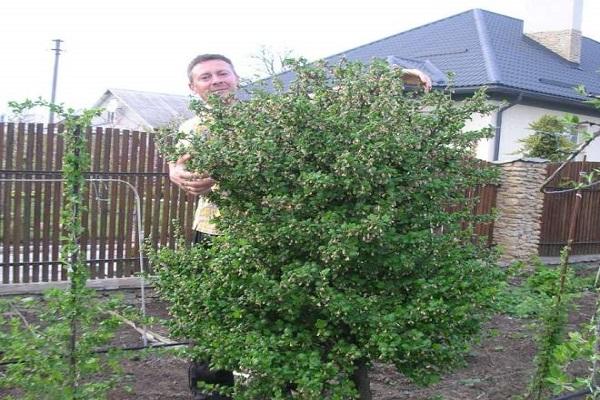
How to grow and care for standard gooseberries?
To obtain a standard gooseberry shape, certain knowledge is important. Planting and grooming requires adherence to simple but important procedures. As a rule, the cultivation of a standard gooseberry consists of two methods:
- formation in stages on a long or low stem;
- with the use of vaccination.
It is believed that getting gooseberries on your own stem is easier.
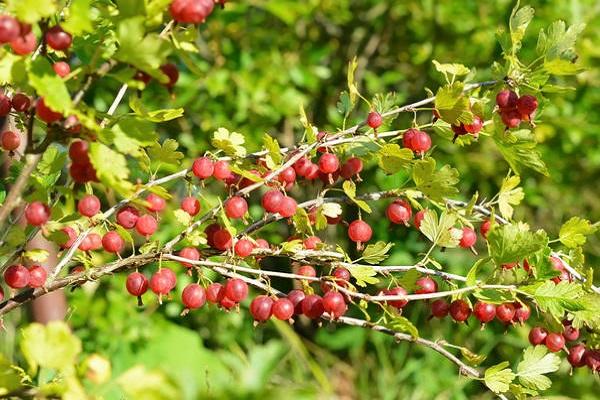
Action steps:
- During the first year, the trunk is being formed.
- From the spring of the second season, the sprout is cut directly at the level of the formation of the crown part.
- Leave about 4 buds at the bottom of the cut. They should be located on opposite sides, the distance between them should be from 5 to 8 cm, remove the rest.
You can get the stem of the desired height from all vigorous varieties: Kamenyar, Ruby pendant, Neslukhovsky and others. The choice of a suitable variety is an important condition. Large-fruited varieties are predominantly selected.
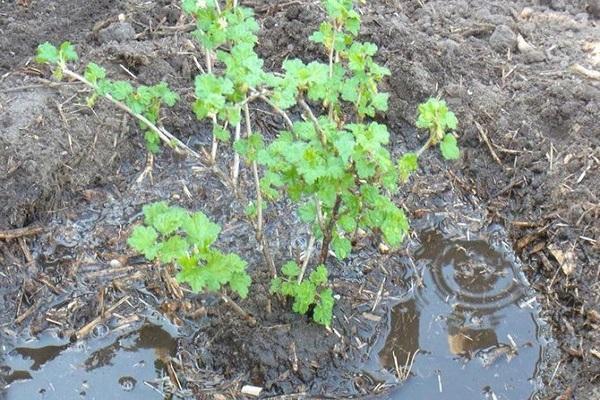
How to properly shape and cut a bush
When the grafted shoots grow back, it is necessary to remove all leaf plates and thorns on the stock. Don't let them germinate during the summer. It is also important to remove root growth. If necessary, it can be used as additional rootstocks to obtain other varieties. An important condition is the removal of the growth during the life of the plant.
When the grafted parts have reached 20 cm in length, remove their growth points. This is done to stimulate branching of the shoots in the current season. Further, the formation is carried out arbitrarily, taking into account personal desires.
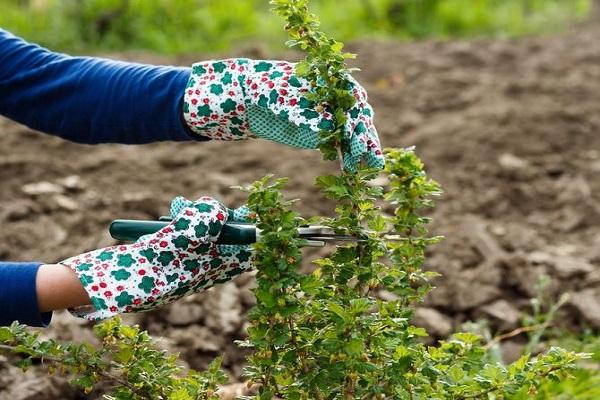
Trimming the bushes is not difficult, and getting a spectacular spherical shape is not difficult. To get a sphere:
- at the end of the second season, try to grow about 6 leading shoots;
- shorten the main conductor by 1/8 of the growth length;
- cut the remaining branches shorter, giving the crown a rounded shape.
When using such pruning, the rejuvenation process is carried out after 6 years. It is necessary to remove old branches, but gradually, observing symmetry. All shoots that have grown below the vaccination site are promptly removed.
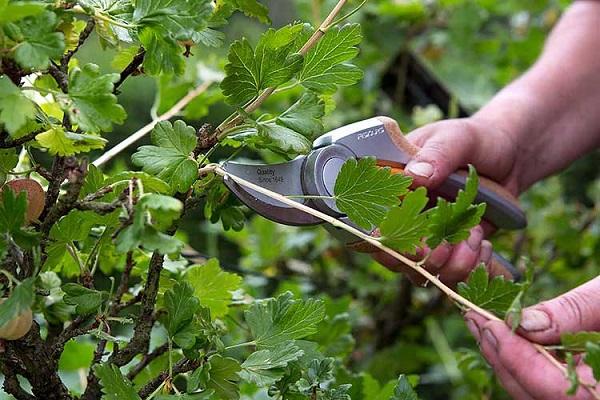
Tips for gardeners for the procedure
When carrying out work, it is important to consider the following nuances:
- Install the support simultaneously with planting. A wooden stake is used for support, which is important to clean from the bark and soak the lower end.
- The garter must be done three times: two on the trunk and on the crown. If the shrub is fruitful, then to prevent the branches from breaking off, the support is taken longer, and fixing bases are led from it in several directions.
- When planting several bushes, fastening is made to horizontal trellises.
Standard gooseberry is an ornament and is successfully used in landscape design. It is easier to care for it, but such a plant requires special care and timely correct pruning.

